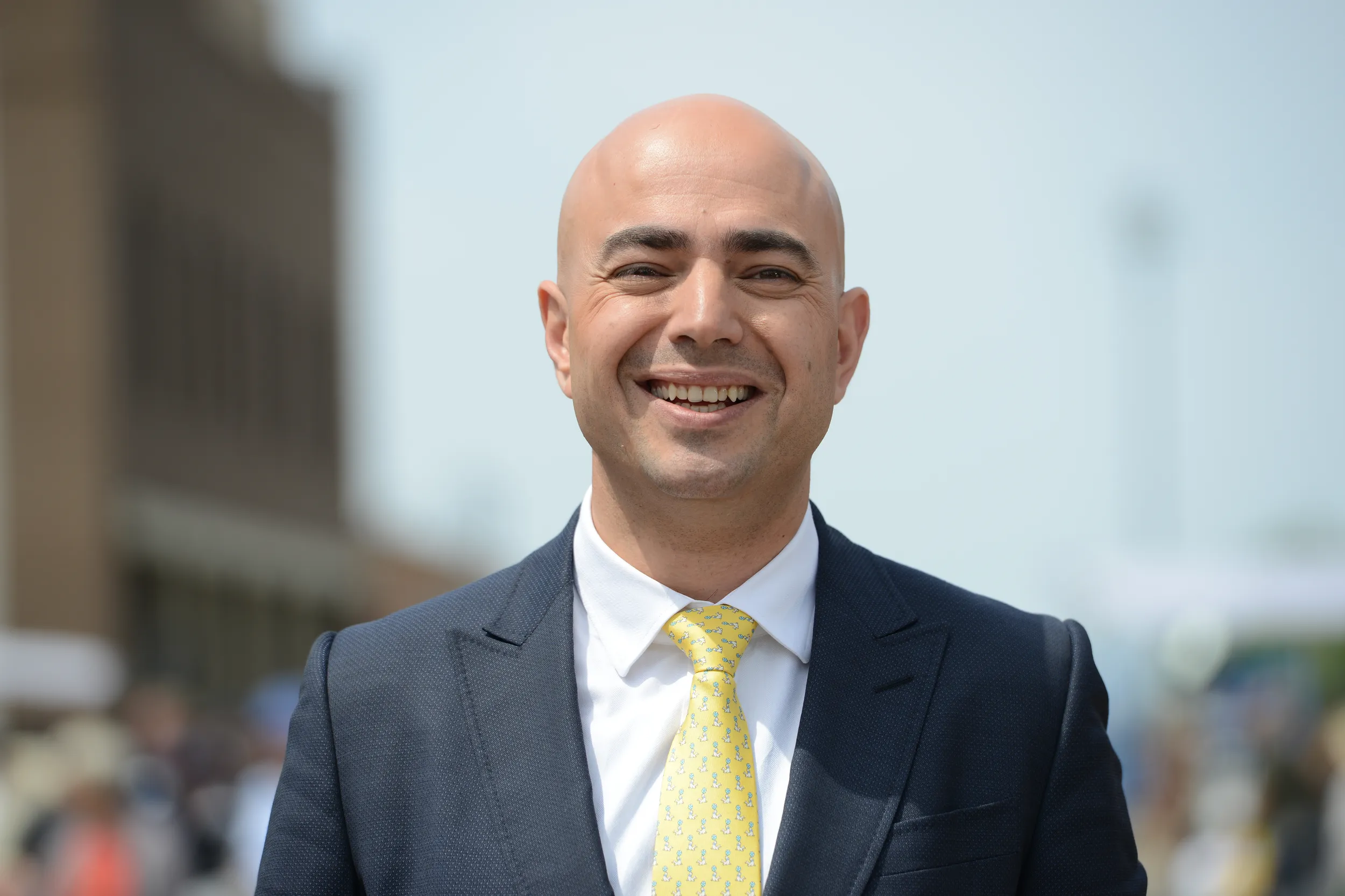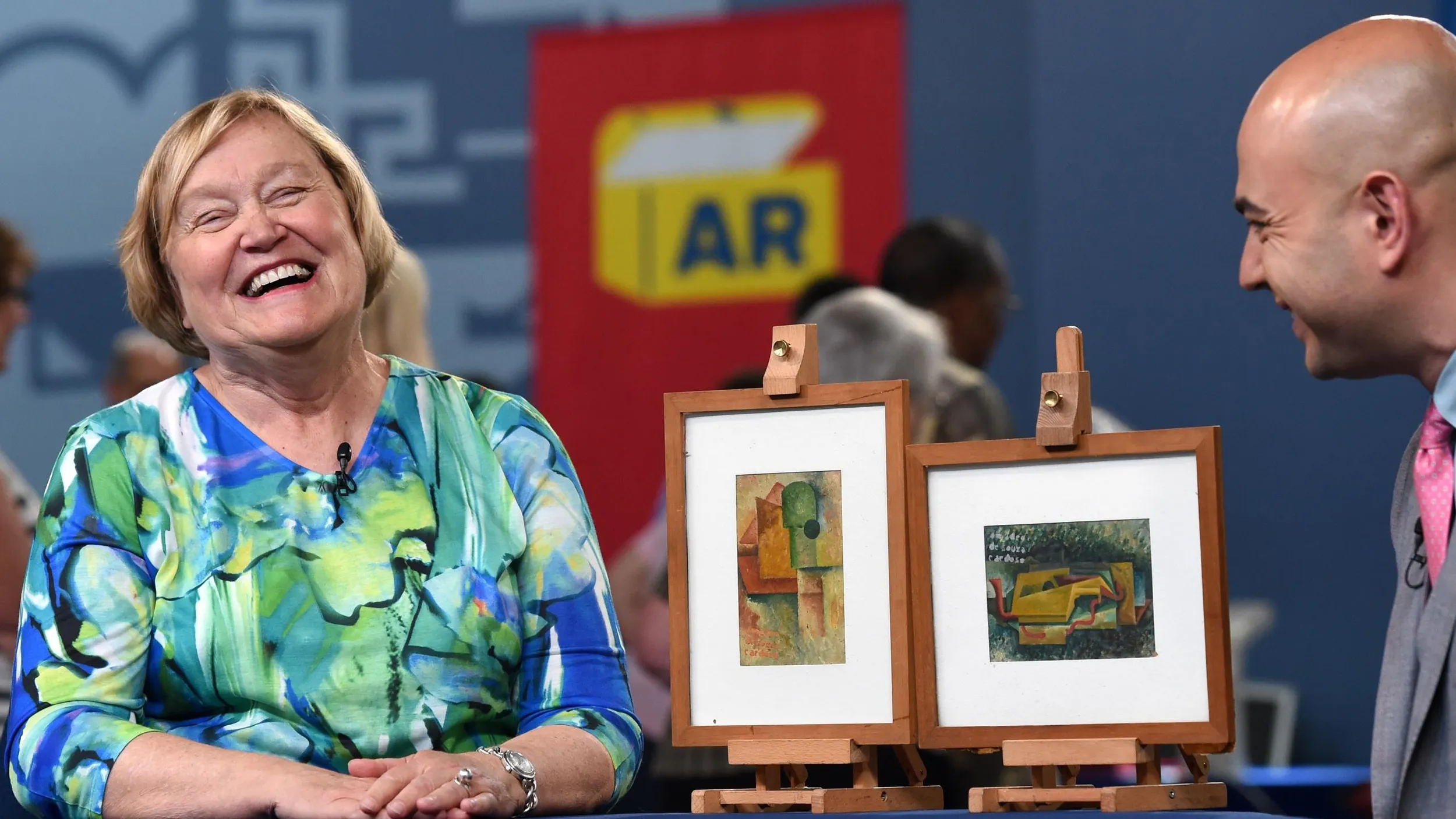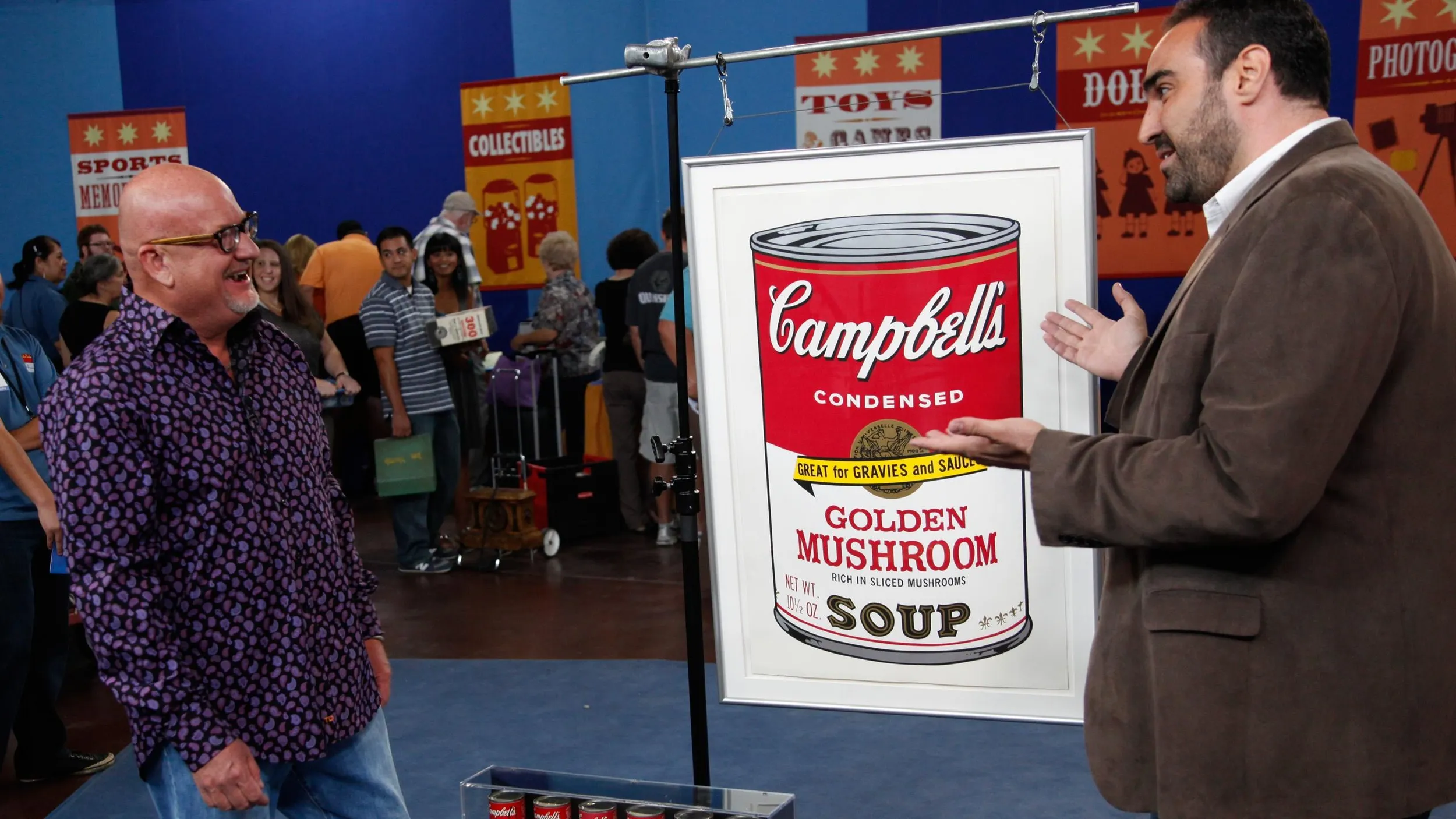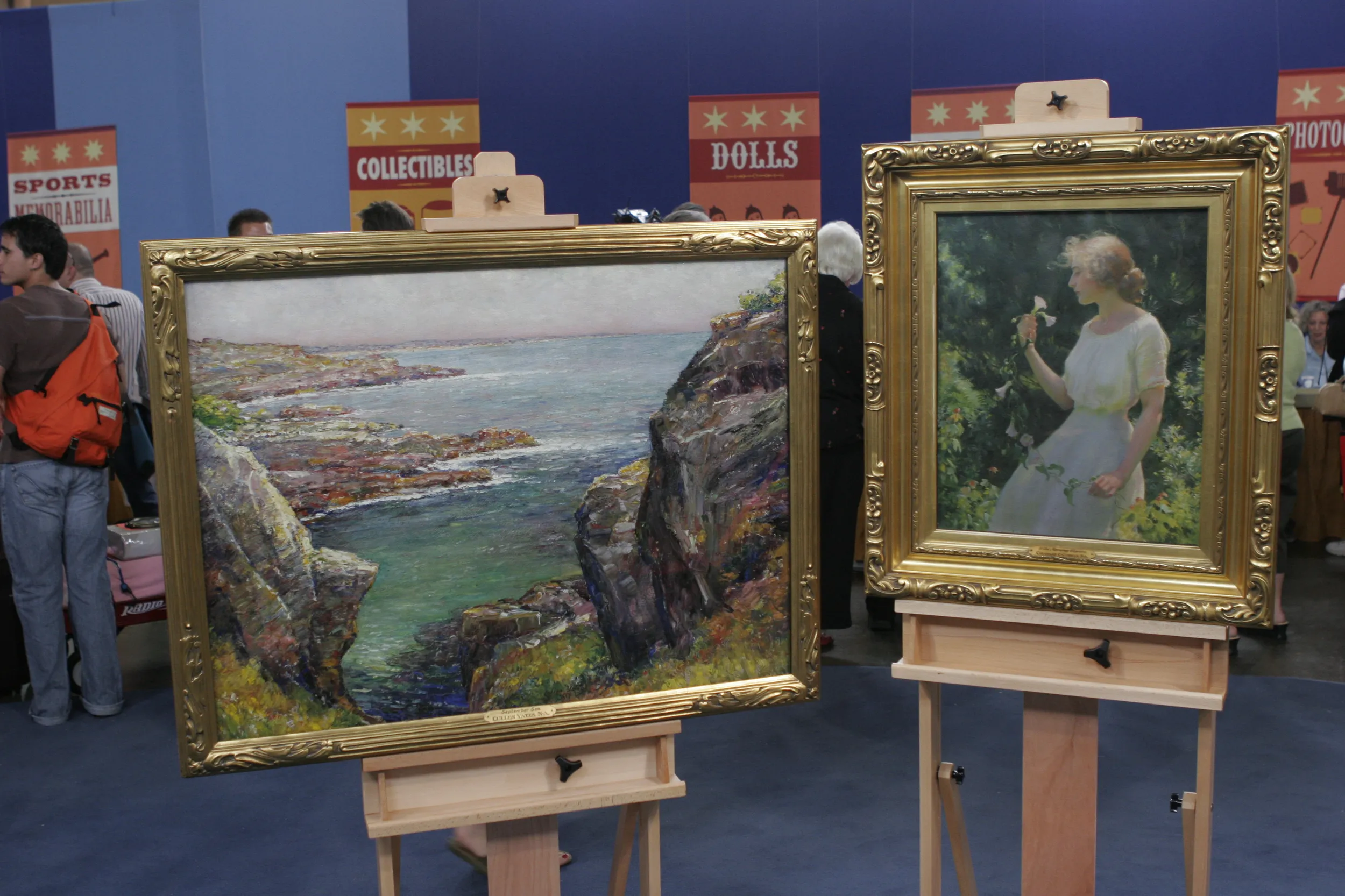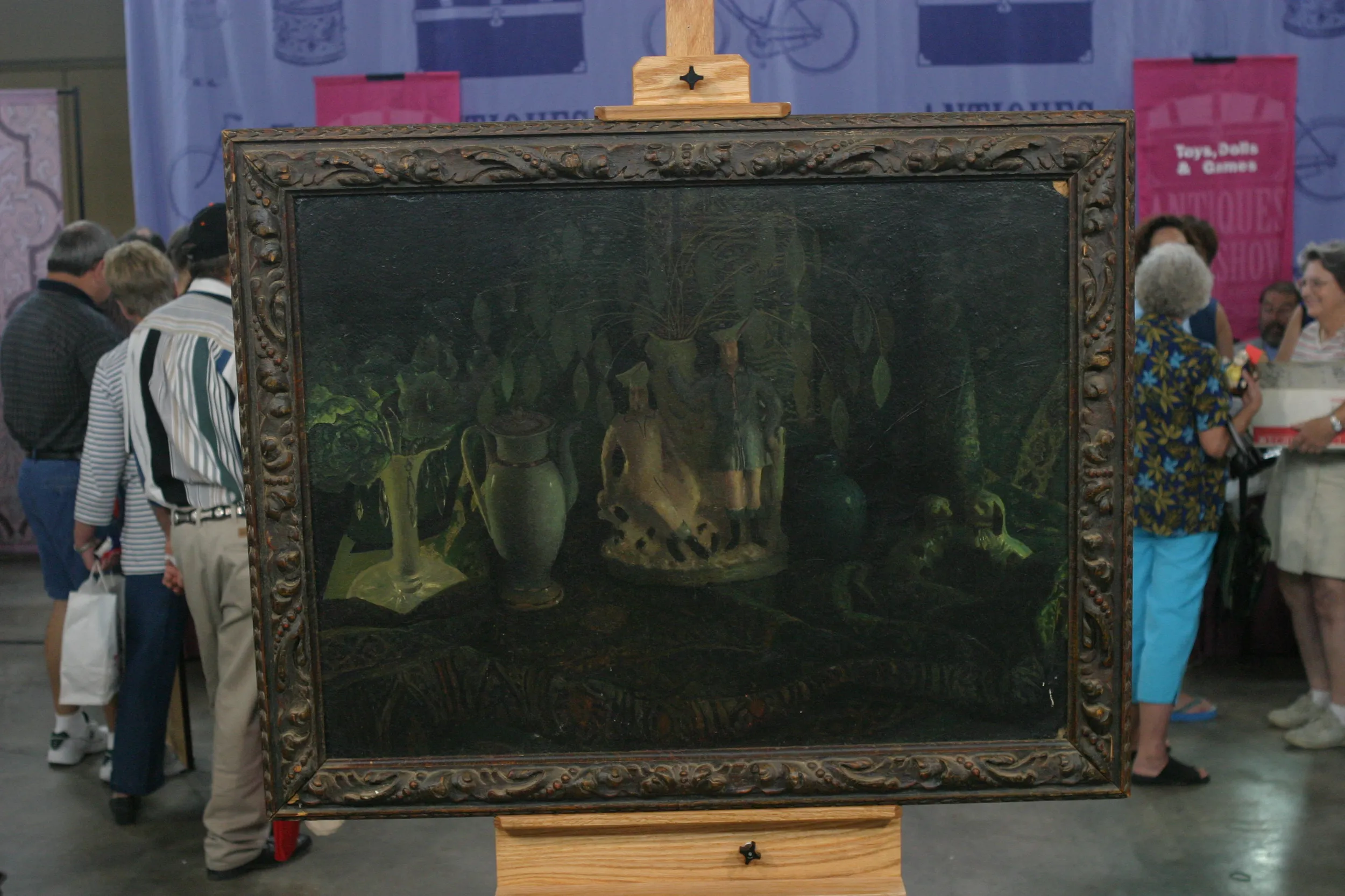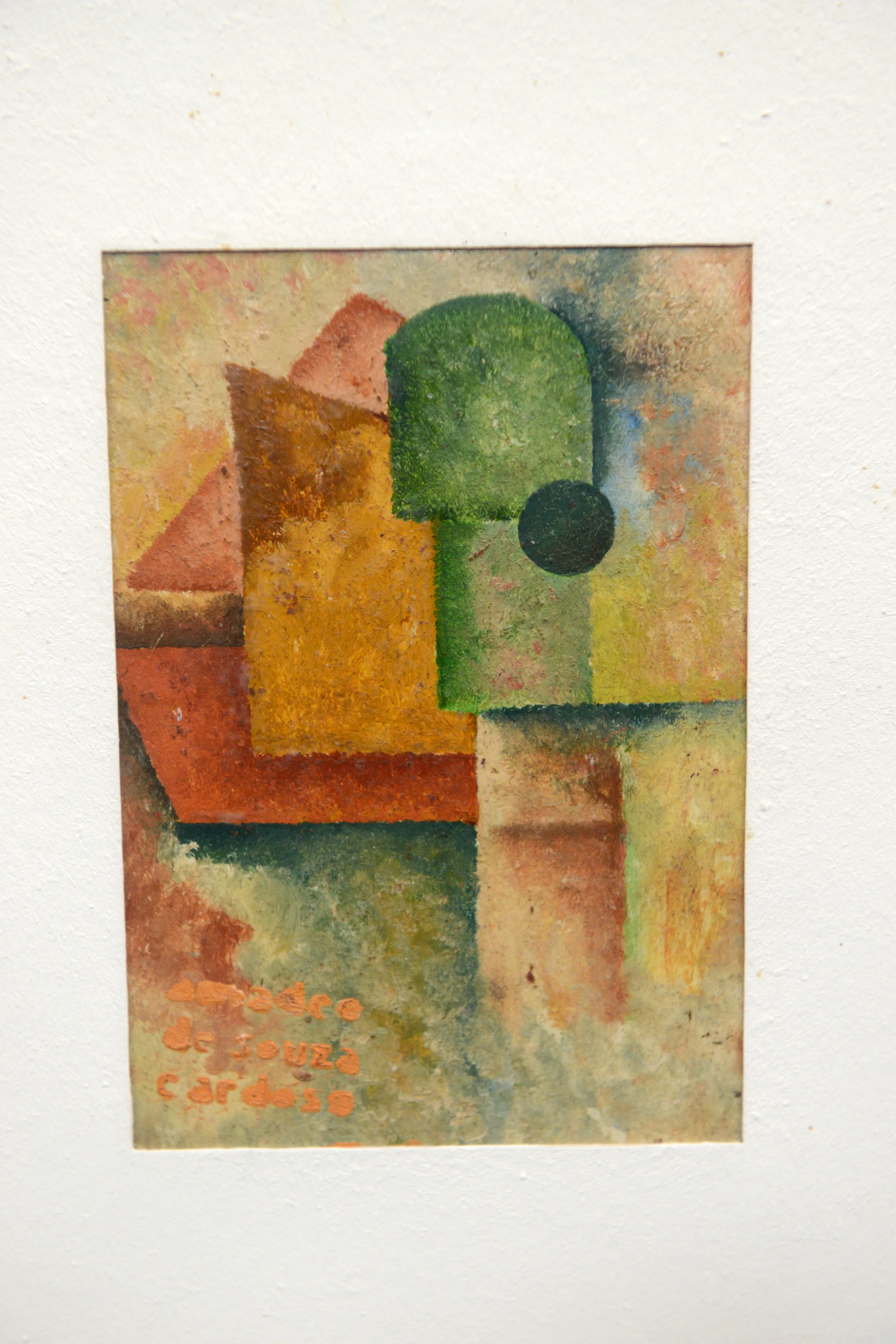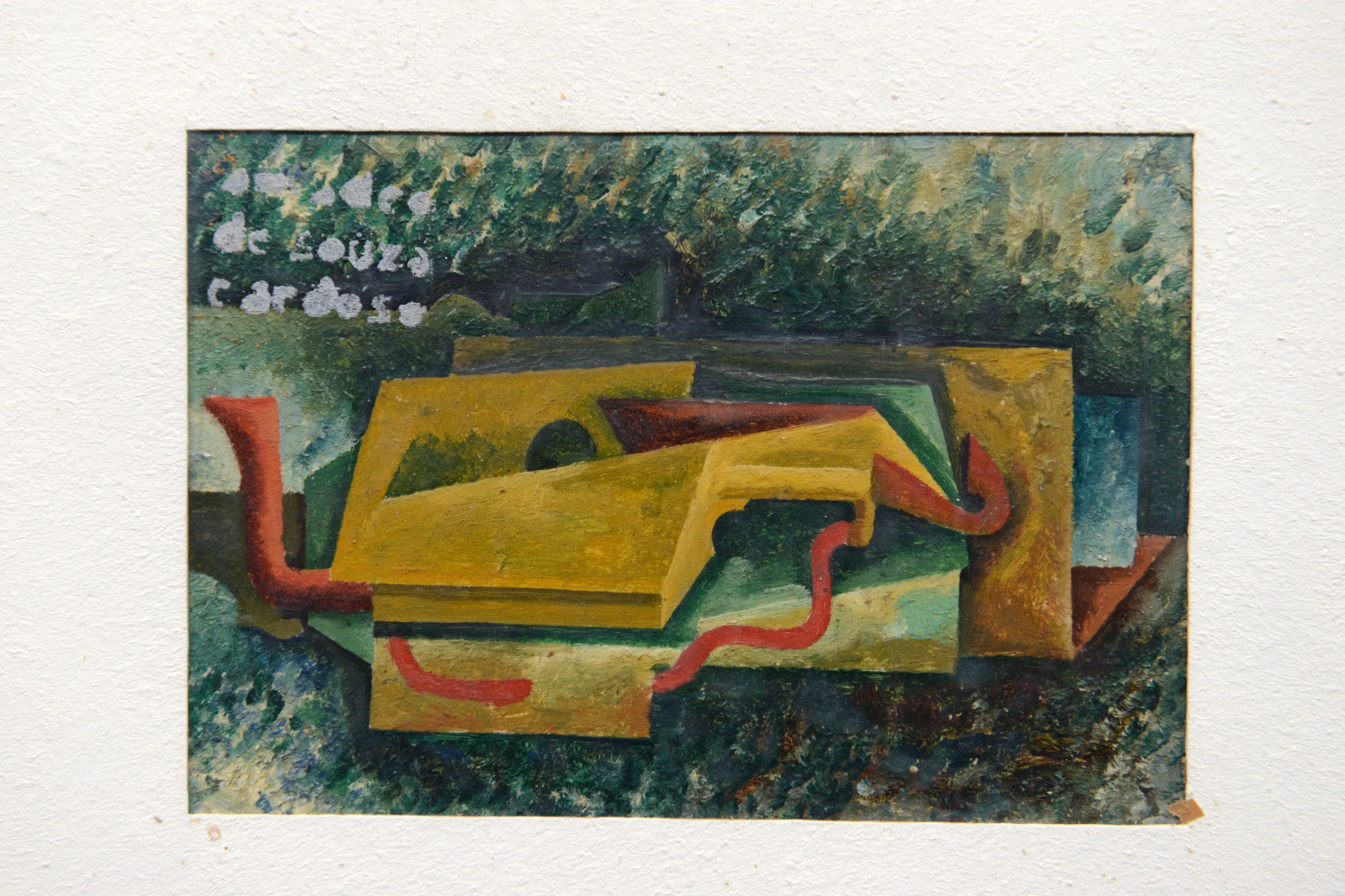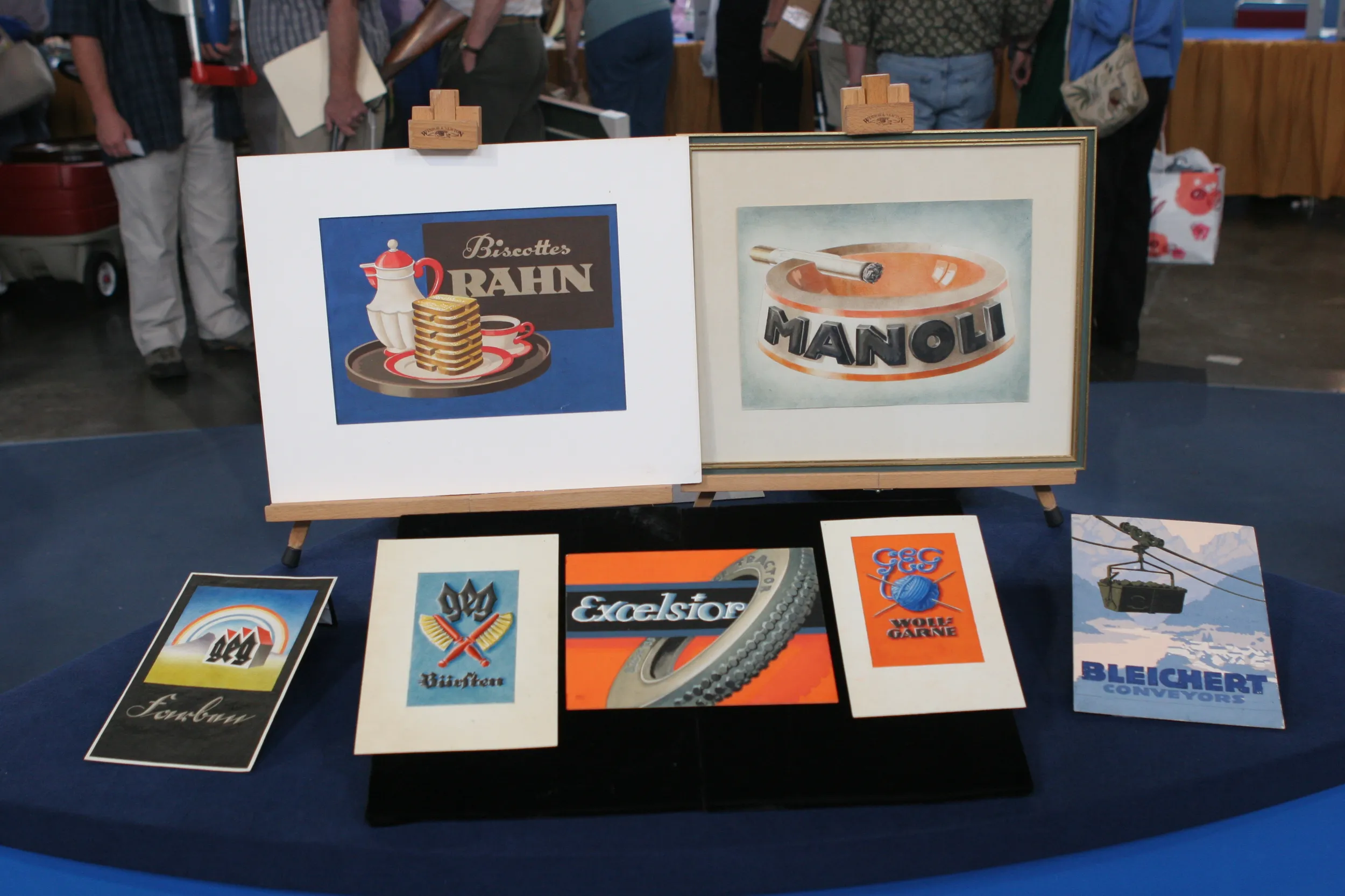GUEST: They belonged to my grandmother, and I assume my grandfather, but he was deceased at that time. And she would let us children play with them and buy and sell them in a fake little store we had-- you know, play store.
APPRAISER: And where was this?
GUEST: This was in Liège, Belgium.
APPRAISER: Do you know anything about the artist?
GUEST: He was Portuguese, I believe.
APPRAISER: Yes.
GUEST: Painted in Paris and visited Belgium around the 1920s. I don't know for what purpose.
APPRAISER: Actually, he visited Belgium a little bit earlier.
GUEST: Earlier.
APPRAISER: Well, let's talk about the artist a little bit.
GUEST: Okay, please tell me, yeah.
APPRAISER: So it's Amadeo de Souza-Cardoso, and he is one of the most important Portuguese modernists of the 20th century. He was born in 1887 and he died in 1918 of the Spanish flu, so only lived about 30 years.
GUEST: Right.
APPRAISER: But had a very productive career. Originally, he started studying in Lisbon, but then at the age of approximately 19, he went to Paris to study.
GUEST: Okay.
APPRAISER: Right around 1910, he went to Belgium.
GUEST: Okay.
APPRAISER: Which is also interesting, because these paintings are Cubist paintings.
GUEST: Right, right.
APPRAISER: And really, right around 1910, Cubism was hot in Europe, and he started developing this style of Cubism in his own works and bringing it back to Portugal, eventually. The medium of these paintings is oil on board. And these paintings were created circa 1910, it's safe to assume. He spent a little bit of time in Belgium, and then he went back to Paris. Now, in Paris, he was friends with quite an illustrious group of artists. This included Juan Gris, Amadeo Modigliani, and actually, speaking of Modigliani, he was very good friends with Modigliani, and Modigliani even kept his sculptures in de Souza-Cardoso's studio.
GUEST: Okay.
APPRAISER: He was very popular amongst his peers and in that group of core Cubists and important early 20th-century Modernists. He also participated in some very seminal art shows, including the Salon des Indépendants. And in 1913, some of his works were exhibited at the Armory Show in New York.
GUEST: Okay. So they're good places to be, yes.
APPRAISER: Very, very good places to be. And his works were very popular. They sold at many of those shows, and some of them are in American museums. There was more interest in the artist until about 1925 or so. There was even an award created for him in Portugal.
GUEST: Wow.
APPRAISER: But really, his paintings were forgotten after that. They were somewhat rediscovered in about 1952.
GUEST: Okay.
APPRAISER: In Amarante, where he's from in Portugal. Do you have any idea of how much they're...
GUEST: I have no idea, and, you know, quite frankly, I don't particularly like them.
APPRAISER: Okay.
GUEST: I don't like the colors, I'm sorry to say.
APPRAISER: If I were going to put these two paintings at auction, as a pair, I would put an estimate, which is a conservative estimate, of $200,000 to $300,000.
GUEST:No! I mean, that is...
APPRAISER: For the pair.
GUEST: Oh, my goodness. That is amazing.
APPRAISER: Do you like the colors now?
GUEST: Not really, but I am feeling that I'm going to have to share with my siblings when I sell them. Amazing. I thank you so much, because if the ROADSHOW had not come to Spokane and I didn't have tickets to come, I probably would have... My kids would have given them to Goodwill.
